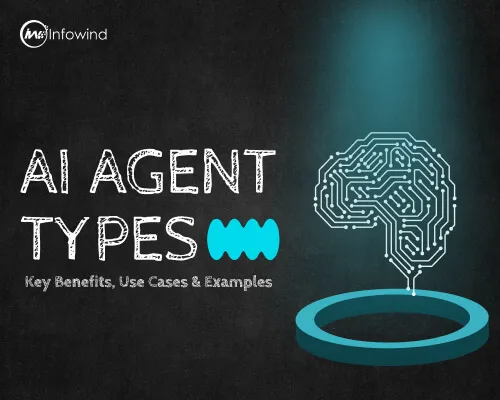Key Takeaways
- Artificial Intelligence is the backbone of self-driving cars.
- Sensors, Lida, 3D mapping, and integrated photonics help in detecting objects near the car.
- SAE categorizes autonomous vehicles on a scale from Level 0 to Level 5, with Level 0 representing fully manual cars that require a human driver, and Level 5 indicating fully autonomous, self-driving vehicles.
- The use of Artificial Intelligence in the automobile industry has benefited other industries like logistics, information technology, ride-hailing, real estate, healthcare, and manufacturing.
- Self-driving cars now focus on software-integrated designs rather than just hardware.
Imagine a world where robots, machines, and vehicles operate independently, without any human intervention. While this may sound like a vision of the future, the idea of autonomous systems has deep historical roots. It dates back to ancient times, when inventors built automated, self-operating machines powered by natural forces like water or wind.
However, the real breakthrough came in the 20th century with the advent of computers, which enabled the development of sophisticated, controlled autonomous systems. Computers brought a new level of sophistication to automation; they could perform complex tasks, process vast amounts of information, and even learn from their experiences.
They started to control everything from industrial processes to Home Appliances, opening the door to the possibility of truly autonomous systems. The creation of the first autonomous vehicle showed that machines could navigate the real world, albeit in a limited way.
This breakthrough paved the way for further advancements in autonomous navigation, leading to the development of robots and vehicles capable of making complex decisions and adapting to unpredictable scenarios.
These developments were just the beginning. Over the years, rapid advancements in artificial intelligence, sensor technologies, and computing power have pushed the boundaries of what autonomous systems can do today.
AI serves as the brain of autonomous self-driving cars, empowering them to navigate complex environments, interpret real-time data, and make split-second decisions with precision. In the automobile industry, AI in autonomous vehicle technology has enhanced the way cars are sold; virtual assistants help customers find their perfect vehicles.
How AI in Self-Driving Cars Works: The Brains Behind Autonomy
Let’s try to comprehend how self-driving cars work and see the objects in their surroundings. For that, let’s imagine that there is a self-driving car running on the road. Also, to increase complexity, let’s say that it’s late at night, pitch dark, and there are a few obstacles or challenges on the road ahead of the car. The car now needs to see and understand these objects to make safe decisions without any human intervention.
To do this, the car utilizes Smart Eyes, which are sensors. Sensors work like magic, giving the car all the information about the size, shape, and position of the obstacles in just a split second, no matter how dark or tough the conditions are. To achieve this complex task, the car uses a special laser-based tool called Lida and a smart communication technology called integrated photonics.
Lida sends out laser beams that bounce off the objects and come back to the car sensors, creating a 3D map of the surroundings. It’s like a magical blueprint that tells the car where everything is, even tiny details like the button on someone’s shirt.
Integrated photonics uses tiny Optical circuits to manipulate light and precisely control its path. It’s like having a super smart traffic controller for the light. It efficiently blocks the light at just the right moments.
With this powerful duo of Lida and integrated photonics, the car can now create a detailed profile of every object it encounters on the road. It’s like giving a car superpowers to see and understand the world around it as the car continues its journey.
It uses this constantly updating 3D map to navigate safely through the ever-changing environment. It can make split-second decisions, avoid obstacles, and ensure the safety of everyone on board. Besides these two tools, cars also put a multitude of cameras to use in order to have an extra distance calculation factor for optimal decision-making.
The complex machine learning algorithms and real-time data processing inside cars’ onboard computers are the masterminds behind driverless cars using AI. These algorithms analyze all the data gathered by the sensors in real time. They consider various factors like the relative distances, speed, and the predicted path of other vehicles to understand the potential risk and safe options available. The algorithm follows a set of rules to prioritize safety and avoid any collisions.
Levels of Autonomy: Measuring AI in Self-Driving Cars
The Society of Automotive Engineers has comprehended the six different levels of autonomous driving to classify cars’ capabilities from Level 0 to Level 5.
Cars that fall into Level 0 are incapable of driving themselves. It is like an old-school car that has no AI feature or capability.
In Level 1, if your car can operate itself to some extent, based on information gathered about its surroundings, it belongs in this category. Features like lane assist, which allows your car to automatically steer if you drift out of your lane, and radar-based cruise control that adjusts your speed based on traffic ahead are classic examples of Level 1 autonomous vehicles.
Level 2 classifies cars that can drive totally on their own in certain situations by both steering and handling acceleration instead of just one or the other. So if you have a more advanced autonomous cruise control system that can also nudge the car to the left or right, or you have a self-park feature that could squeeze your car into a tricky parallel spot, you’ve got a level 2 vehicle. However, the driver must remain alert at all times and be ready to take control whenever necessary.
Level 3 is where the cars are capable of driving down a normal road and along a specific path according to a destination punched in by the driver. These cars don’t have meaningful fail-safes, putting them in a weird sort of automobile limbo.
Like Level 3, Level 4 still relies on a human driver as a backup, but it’s advanced enough to manage more complex driving scenarios on its own. This means that a level 4 car can be specifically designed to handle certain tasks fully, or drive within a limited geographical area, while still requiring a human driver for situations that it isn’t quite intelligent enough to deal with on its own, like a difficult merge onto a busy highway.
The biggest difference is that if a level 4 car encounters a scenario outside of its limits, it has to be able to safely abort the drive, typically by parking the car until the human passenger takes control. Currently, Google’s self-driving Waymo fleet is comprised of level 4 vehicles, meaning that they can be operated without anyone inside, but they are restricted to certain locations.
Most of the Level 5 cars are designed without steering wheels. A level 5 car should be able to handle any condition that a human would, and theoretically, with more safety and precision. Level 5 cars are driverless cars using AI.

How AI Benefits the Auto Industry Through Self-Driving Cars
AI’s integration into driverless cars has boosted safety, optimized performance, and delivered a host of additional benefits. Below are some of the key advantages of AI-powered autonomous vehicles.
Environmental Advantages
The production of self-driving vehicles powered by electric or hybrid engines has significantly lowered greenhouse gas emissions. It is advantageous for the surroundings. The energy-efficient usage has helped in saving fuel and reducing the adverse environmental impacts.
Mobility-as-a-service
Autonomous cars have introduced a new model, which is mobility-as-a-service. Built-in AI caters to people who are disabled or have problems with Mobility by providing auto-parking Wheelchairs and voice commands. This service is enriched in Tesla’s summon feature, where the car can navigate tight spaces and come to the passenger when called.
Enhanced Safety
AI-integrated features such as adaptive cruise control, ACC Lane departure, warning LDW, and automatic emergency braking AEB have enhanced the safety of passengers. Autonomous vehicles must use sensors and cameras to detect obstacles and hazards, ensuring passenger safety and improving the overall travel experience.
Fuel Efficiency
Artificial Intelligence has optimized the cost of traveling and has made trips fuel-efficient. AI identifies and navigates the most efficient and least congested routes to reach the destination. This, in turn, requires fewer brakes and avoids highly crowded areas, which ultimately leads to less fuel being burned. Also, it increases the lifespan of the vehicles.
Challenges Facing AI in Self-Driving Cars
While AI in driverless cars has shown many benefits, this good cause comes along with a lot of limitations and cons.
Reduced job opportunities
AI autonomous vehicles have impacted driving jobs. It generates idle time for the drivers or riders as the trip time is reduced; moreover, it will significantly decrease jobs for taxi and ride-share drivers. Nearly 4 million jobs could be lost.
Technical constraints
Even just a minor glitch could easily cause a far worse accident than anything human error might typically incur. Autonomous vehicles also have difficulty operating in certain types of weather, for example, when heavy rain interferes with roof-mounted laser sensors or snow, which can interfere with cameras.
Ethical dilemmas
A driverless vehicle experiences a problem navigating the crowd of pedestrians. They also have trouble distinguishing and determining human intention on the roads, as well as reading road signs, which are challenging for a robot GPS and other technologies, might not register obstacles like potholes, recent changes in the road conditions, and newly posted signs.
Use by hackers
Hackers gaining access to vehicle software and controlling or affecting its operation could be a major concern. Self-driving cars may be great news for terrorists as well, who may choose to load vehicles with explosives and use them as moving bombs.
Use Cases of AI in Self-Driving Cars Across the Auto Ecosystem
AI is revolutionizing the way the world thinks, thus leading to evolution in the industries in the blink of an eye. The Automobile Ecosystem has widely adopted AI in autonomous vehicles. Let’s explore the practical examples of how AI is being applied to this industry.
Autonomous ride-hailing (Waymo, Cruise)
With AI technology and machine learning algorithms, self-driving cars are able to plan the path, navigate, and make human-like decisions. AI and cars are now a new combination. The autonomous ride-hailing services are offered in a few cities in the United States by Waymo and Cruise.
AI in logistics
To automate the transportation and logistics industry, TuSimple and Kodiak have been introduced that perform semi and autonomous trucking. They are capable of performing route optimization, real-time monitoring of driving conditions, and have adaptive cruise controls.
Smart traffic navigation
Tesla’s Autopilot and Full Self-Driving (FSD) systems leverage AI to navigate traffic and adjust routes based on traffic density. They utilize V2V (Vehicle-to-Vehicle) and V2I (Vehicle-to-Infrastructure) communication to detect congestion and dynamically update navigation paths.
AI-driven in-car assistants
Through the NLP, voice processing assistants in cars like Mercedes-Benz MBUX and BMW Intelligent Personal Assistant have voice-assisted AI that provide entertainment and navigation features.
Also Read: How to Create a Personal AI Assistant with Open Source Frameworks
Impact of AI in Self-Driving Cars on Auto Manufacturing and Design
With the introduction of autonomous vehicles, the design segment in the auto landscape has come a long way. In the good old days, the car design was focused on the hardware planning, manufacturing, and assembling, while it has now drifted to software integration, which is a necessity for every self-driving car. Equipping the vehicles with sensors, cameras, LiDAR, etc, is a first consideration while giving a thought to car design.
Vehicle interiors are now redefined. Previously, driver comfort and ease were the priorities, but having no steering in the cars leaves room for luxurious seats for the passengers that are not only spacious but also swiveling. Vehicle interiors that have AR displays, infotainment, and a lot, as in Volvo’s Concept 26, have raised the bar for the newcomers.
The Software-defined vehicles (SDVs) allow flexibility, improvement, and updates easily to manage vehicle functions and keep introducing new features in a short span. The original equipment manufacturing companies have been collaborating with the tech companies for the integration of AI services, leading to a boost in the market and the launch of cutting-edge vehicles and products.
Also Read: AI in Manufacturing: Benefits, Examples, and Use Cases
The Future of AI in Self-Driving Cars: What’s Next?
The next decade will bring faster transportation, driven by advancements in 5G and V2X (vehicle-to-everything) communication, which will significantly enhance speed and ease of connectivity. The vehicles will soon be able to communicate with the street signals, sensors, and other cars. This will help in improving traffic and accident safety due to prior communication.
High-definition maps and GPS installation navigate the pattern and path to reach the destination. Moreover, an introduction to 3D landmarks has allowed for searching for places in an enhanced manner. The real-time data through AI chips helps in making on-the-fly decisions of changing lanes, accelerating speeds, and changing the path. Edge computing has also helped in this. The smart zone cities are redefining the infrastructure to adopt the future of AI in self-driving cars.
Conclusion: Why AI in Self-Driving Cars is the Auto Industry’s Turning Point
To conclude, autonomous vehicles have been opening new doors to the automobile and IT industry. Embracing the changes brought about by AI is intended to make the smart cars that are not only self-driven but also perform all the predefined tasks and are trained to operate in complex situations as well.
The latency time will be reduced in supply chain systems, logistics, and transportation, and cars will soon be able to know the whereabouts of peer vehicles. Let’s tighten our seat belts and embark on this journey of self-driving cars and speed up to reach the new milestones of innovation and tech in vehicles. These intelligent systems will improve and manage the traffic flow on the roads.





